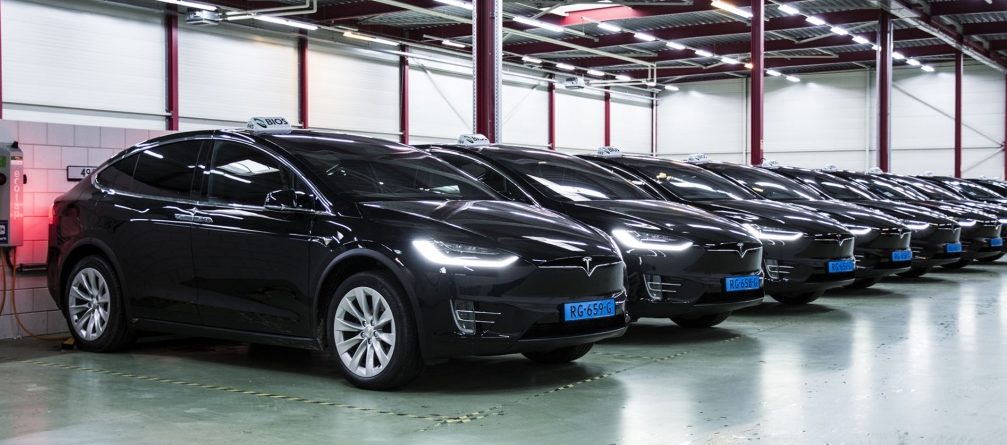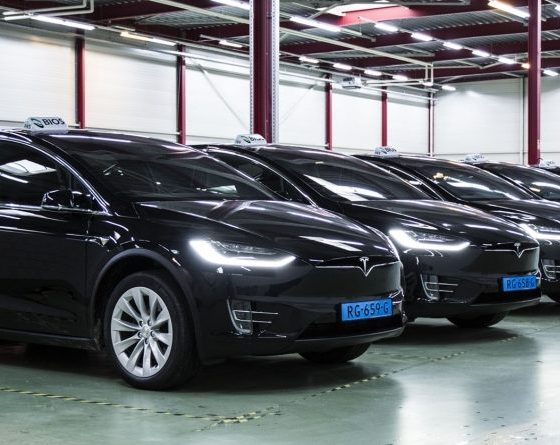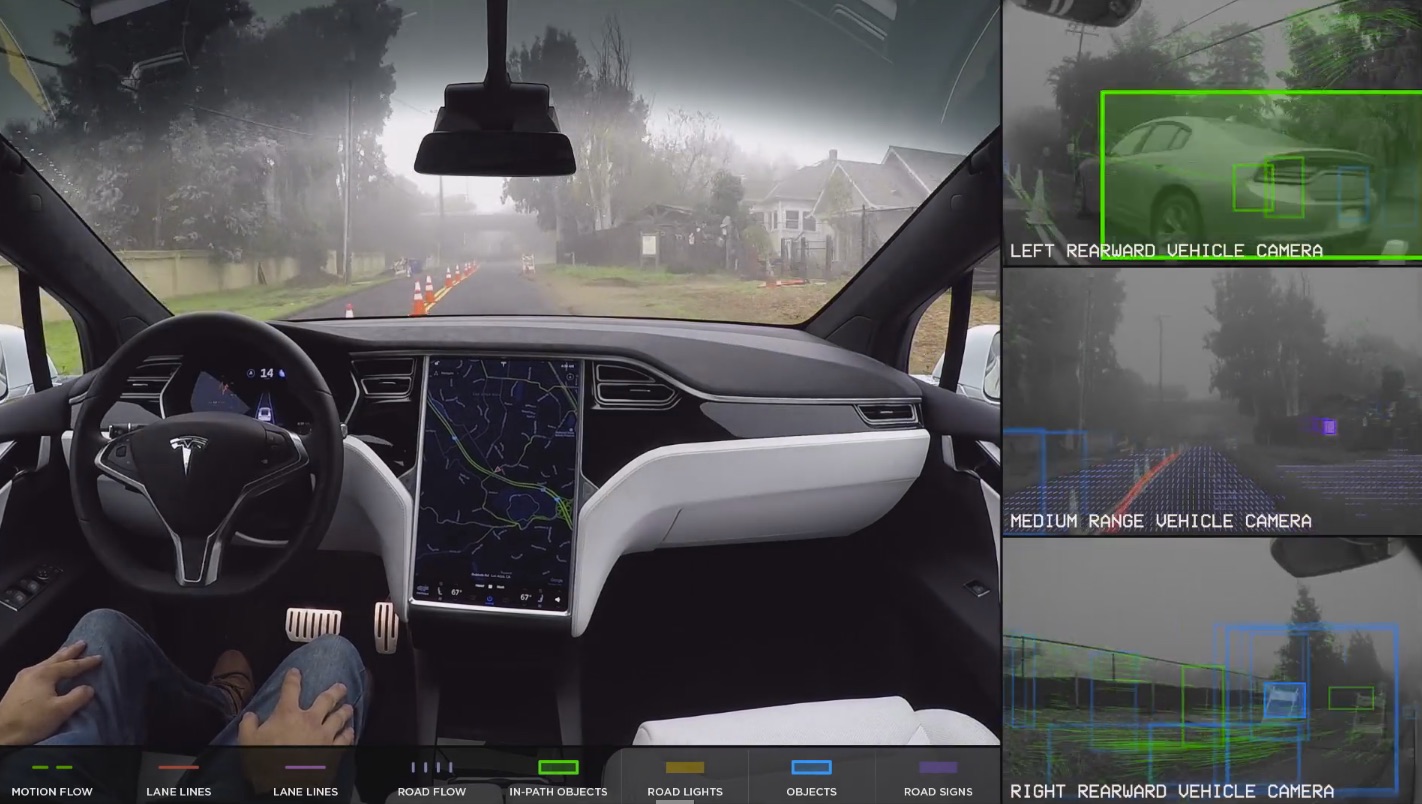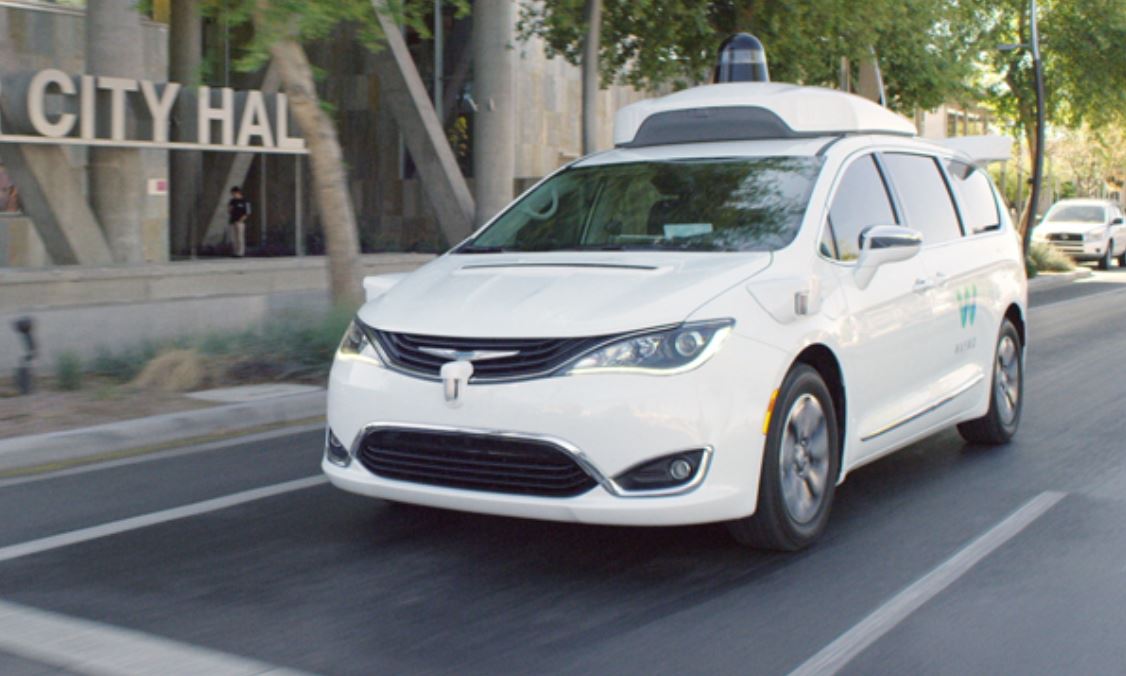

Lifestyle
Does the Tesla Network have any serious self-driving competitors?
Elon Musk has made it clear that the Tesla Network’s potential is no joke.
“The fundamental utility of your vehicle will increase by a factor of 5,” he told the audience during Tesla’s Investor Autonomy Day earlier this year. Then, during a broad investor call in May, he reportedly said that self-driving would give Tesla a $500 billion dollar market cap with vehicles worth up to $250,000 in the next few years thanks to their Robotaxi capabilities. Each car will be capable of doing about 100 hours of self-driving hours of work per week to their owners’ benefit. Musk’s even more astounding prediction was that Tesla’s Full Self-Driving chip and real-time development data being fed by current vehicles on the road will lead to some 1 million Robotaxi-capable Tesla cars by next year.
Of course, Tesla isn’t the only company vying for autonomous taxi riders. Is there anything Tesla Network competitors are supposed to do that gives them a competitive edge? I’ve become curious recently and decided to have a look. These kinds of questions can’t be left unanswered, you know!
Waymo is probably one of the most well known Robotaxi companies making headway in the self-driving arena. Their vehicle program aims to “help…people run errands, commute to work…[and]…drop off kids at school,” among other things shown on the company’s website. I’m seeing lots of family focus in their marketing, and Waymo’s pitch even includes giving elderly and disabled people more mobility options. It’s all very ‘feel good’ and great, but not quite distinct from what Tesla aims to do with the Robotaxi. I mean, just owning a Tesla will provide those capabilities, and if you don’t own one, you can rent one to do all those tasks just the same.
Next, there’s Uber, whose self-driving cars are part of the company’s ultimate goal of becoming the “one-stop shop for the movement of people and powering local commerce around the world,” according to its CEO Dara Khosrowshahi. Actually, Uber is totally banking on the Robotaxi concept for survival. Former CEO Travis Kalanick made some comments to that effect in 2016. “What would happen if…we weren’t part of the autonomy thing? Then the future passes us by, basically, in a very expeditious and efficient way,” he told Business Insider in an interview.
Uber is definitely taking aim at a similar audience as the Tesla Network, or the ride-hailers anyway. The biggest difference between the two companies, however, is the assumption by Uber that people will gradually move away from vehicle ownership altogether, including the people it currently pays to drive other people around. Drivers are expensive! So, Uber hopes to get rid of them in favor of a fleet of company-owned autonomous vehicles.

Elon Musk has argued that this semi-traditional one owner, one gazillion cars approach is unwieldy. Also, if a certain percentage of those riders are financially capable of owning an autonomous car, why would they pay Uber to constantly hitch rides when their own car could do the same thing and earn that money for themselves? Well, that’s the point of the Tesla Network. If people are taking privately-owned self-driving cars from place to place via a company like Uber, why wouldn’t they be a private owner themselves if given access to a connective network?
Lyft is more or less in the same boat as Uber on this, but with a twist. They’ve recently begun offering Waymo rides via their app in Phoenix, Arizona, which is a pretty cool development for the future of Robotaxis. It does have a similarity with the Tesla Network in that Waymo’s vehicles are privately owned by someone other than the ride sharing app provider. If, say, Tesla owners could put their cars onto the Lyft app for service, there would be a one-to-one similarity with the Tesla Network. That doesn’t look like it’s Lyft’s preferred approach, though, as the company is developing its own self-driving system. Perhaps there will be a mixed approach? I’m sure Tesla will take note of competing connectivity apps and have incentives to purchase a Tesla for Robotaxi duties over other self-driving cars.
Tesla does, of course, intend to compete directly with Uber and Lyft in ways outside of private owners on its network. “Tesla will for sure operate its own ride-hailing service. We’ll compete directly with Uber and Lyft, obviously. There will be a company-owned fleet where there aren’t enough customer cars to be rented out. So if we find in a particular metro (where) there aren’t enough customers who are willing to add their car to the shared fleet, that’s where we’d supplant with the company-owned fleet,” Elon Musk said during the company’s Q3 call in 2018.
 Waymo’s fully self-driving Chrysler Pacifica Hybrid minivan on public roads. | Image: Waymo
Waymo’s fully self-driving Chrysler Pacifica Hybrid minivan on public roads. | Image: Waymo
GM Cruise might be building vehicles that could be competitive in something akin to the Tesla Network. Their cars are purpose-built to be self-driven, similar to how Tesla’s cars are built electric from the ground up, and it looks like there could be individual ownership instead of only company ownership. There’s a big disadvantage for GM Cruise, though. They’re not Tesla.
Musk’s famous goal with the company was to build an amazing car that just happened to be electric, and he’s succeeded on an incredible scale which has been recognized by test agencies and auto publications time and time again. I’d argue that GM will have to have something either much more appealing or much less expensive than a Tesla if they want to eventually compete with a future Tesla Network of private owners. Otherwise, they’re in the boat with Uber and Lyft and competing with millions of Robotaxi-capable… Teslas.
What about chip companies that are developing self-driving solutions? Any good ideas there?
NVIDIA looks to be developing super amazing computing hardware and software for automotive brands to license for their own vehicles rather than developing in-house. Considering the expenditure a self-made system requires, this isn’t surprising, and even Tesla (i.e., Musk) was criticized for deciding to go this route for the Full Self-Driving computer. NVIDIA’s partners, however, look to be interested in owner-initiated self-driving rather than a money making capability in and of itself, i.e., regular drivers using their cars for regular things. Aurora, too, is developing their own autonomous driving system with the intention of licensing it to other partners in the hopes that their product will become the “nerve center” of self-driving vehicles, but nothing that gives their Robotaxi capabilities a nudge over Tesla.
It goes without saying that the software and technology needs to build a successful AI are significant, and a car maker will probably save a lot of money using someone else’s system initially. Perhaps those companies could use Aurora’s or NVIDIA’s system to keep themselves in the running or catch them up for a while where they’ve fallen behind consumer demand. There’s just one problem, though, for legacy auto companies doing the catching up – they’re not all electric.
In his Autonomy Day remarks, Musk wasn’t very kind about Tesla’s gas-guzzling brethren and their Robotaxi hopes. Any non-electric venture will not be competitive, he said flatly. Considering Tesla’s battery upgrades giving them a 1 million mile life cycle and the lower cost of plugging in for juice vs. filling up, this makes sense even without a deep analysis (although Musk has done plenty of that for sure).
Between Robotaxi competitors not making the case for single-party ownership of self-driving fleets and the low cost of electric vehicle taxis, Musk certainly seems to be right about the whole “buying any car besides a Tesla is like buying a horse” thing. I’m not seeing the case for another brand’s strategy having more benefit than the Tesla Network for those who own Tesla vehicles.
How about you?

Lifestyle
Tesla Model S Plaid battles China’s 1500 hp monster Nurburgring monster, with surprising results
There is just something about Tesla’s tuning and refinement that makes raw specs seem not as game-changing.

The Tesla Model S Plaid has been around for some time. Today, it is no longer the world’s quickest four-door electric sedan, nor is it the most powerful. As per a recent video from motoring YouTube channel Carwow, however, it seems like the Model S Plaid is still more than a match for some of its newer and more powerful rivals.
The monster from China
The Xiaomi SU7 Ultra is nothing short of a monster. Just like the Model S Plaid, it features three motors. It also has 1,548 hp and 1,770 Nm of torque. It’s All Wheel Drive and weighs a hefty 2,360 kg. The vehicle, which costs just about the equivalent of £55,000, has been recorded setting an insane 7:04.957 at the Nurburgring, surpassing the previous record held by the Porsche Taycan Turbo GT.
For all intents and purposes, the Model S Plaid looked outgunned in Carwow’s test. The Model S Plaid is no slouch with its three motors that produce 1,020 hp and 1,420 Nm of torque. It’s also a bit lighter at 2,190 kg despite its larger size. However, as the Carwow host pointed out, the Model S Plaid holds a 7:25.231 record in the Nurburgring. Compared to the Xiaomi SU7 Ultra’s record, the Model S Plaid’s lap time is notably slower.
Real-world tests
As could be seen in Carwow’s drag races, however, Tesla’s tech wizardry with the Model S Plaid is still hard to beat. The two vehicles competed in nine races, and the older Model S Plaid actually beat its newer, more powerful counterpart from China several times. At one point in the race, the Xiaomi SU7 Ultra hit its power limit due to its battery’s temperature, but the Model S Plaid was still going strong.
The Model S Plaid was first teased five years ago, in September 2020 during Tesla’s Battery Day. Since then, cars like the Lucid Air Sapphire and the Xiaomi SU7 Ultra have been released, surpassing its specs. But just like the Model Y ended up being the better all-rounder compared to the BYD Sealion 7 and the MG IM6, there is just something about Tesla’s tuning and refinement that makes raw specs seem not as game-changing.
Check out Carwow’s Model S Plaid vs Xiaomi SU7 drag race video below.
Lifestyle
500-mile test proves why Tesla Model Y still humiliates rivals in Europe
On paper, the BYD Sealion 7 and MG IM6 promised standout capabilities against the Model Y.

BYD is seeing a lot of momentum in Europe, so much so that mainstream media has taken every opportunity to argue that the Chinese automaker has beaten Tesla in the region. But while BYD sales this year in Europe are rising and Tesla’s registrations remain challenged, the raw capabilities of vehicles like the Model Y are difficult to deny.
This was highlighted in a 500-mile challenge by What Car? magazine, which showed that the new Tesla Model Y is more efficient, cheaper to run, and more reliable than rivals like the BYD Sealion 7, and even the nearly 400 KW-charging MG IM6.
Range and charging promises
On paper, the BYD Sealion 7 and MG IM6 promised standout capabilities against the Model Y. The Sealion 7 had more estimated range and the IM6 promised significantly faster charging. When faced with real-world conditions, however, it was still the Model Y that proved superior.
During the 500-mile test, the BYD nearly failed to reach a charging stop, arriving with less range than its display projected, as noted in a CarUp report. MG fared better, but its charging speeds never reached its promised nearly-400 kW charging speed. Tesla’s Model Y, by comparison, managed energy calculations precisely and arrived at each stop without issue.
Tesla leads in areas that matter
Charging times from 25% to 80% showed that the MG was the fastest at 17 minutes, while Tesla and BYD were close at 28 and 29 minutes, respectively. Overall efficiency and cost told a different story, however. The Model Y consumed 19.4 kWh per 100 km, compared to 22.2 for MG and 23.9 for BYD. Over the full trip, Tesla’s charging costs totaled just £82 thanks to its supercharger network, far below BYD’s £130 and MG’s £119.
What Car? Magazine’s testers concluded that despite BYD’s rapid sales growth and the MG IM6’s seriously impressive charging speeds, Tesla remains the more compelling real-world choice. The Model Y just offers stability, efficiency, and a proven charging infrastructure through its Supercharging network. And as per the magazine’s hosts, the Model Y is even the cheapest car to own among the three that were tested.
Watch What Car? Magazine’s 500-mile test in the video below.
Lifestyle
Tesla Cybertruck slapped with world’s least intimidating ticket, and it’s pure cringe
One cannot help but cringe and feel second-hand embarrassment at the idea of a person just driving around with a stack of these babies.

A Cybertruck parked at Stanford Shopping Center in California was recently hit with what might be the most try-hard piece of paper ever slipped under a wiper blade: a “fake citation” accusing the driver of supporting a “fascist car.”
The note, shared on X by Tesla staff program manager Ryan Torres, quickly made the rounds on X, where it quickly gained attention as an example of how not to protest.
The world’s least intimidating ticket
According to the citation, the supposed “violation” was “driving a fascist car.” The remedial action? Take the bus, call an Uber, or ride a bike. The note also dubbed Elon Musk a “chainsaw-wielding Nazi billionaire.” Now, protests against Tesla and Elon Musk have become commonplace this year, but one cannot help but cringe and feel second-hand embarrassment at the idea of a person just driving around with a stack of fake anti-Tesla/Musk citations.
Torres pointed out the irony himself in his post on X. Tesla currently employs over 140,000 Americans, and SpaceX has put the U.S. firmly back at the top of space technology. As Torres put it, maybe the person behind the world’s least intimidating ticket should “read a book on innovation before vandalizing” other people’s property.
Peak performative clownery
Not to mention that the fake ticket’s logic collapses under its own weight. EVs like the Cybertruck are literally designed to reduce emissions, not “destroy the economy.” If anything, Tesla has bolstered the United States’ economy by fueling jobs in engineering, manufacturing, and clean energy. It’s not the first time a Tesla has been the target of vandalism or politically charged notes, but this one stands out for sheer cringe value.
Torres summed it up neatly: “Peak clownery.” On that point, at least, the citation earns full marks. In a way, though, perhaps cringe fake tickets are not as bad as the literal firebombs that were being thrown at Tesla stores and cars earlier this year because some critics were gleefully misinformed about Elon Musk.








